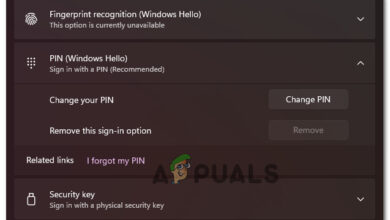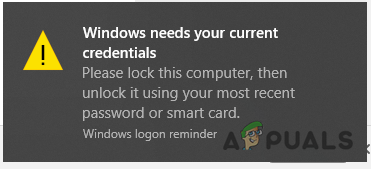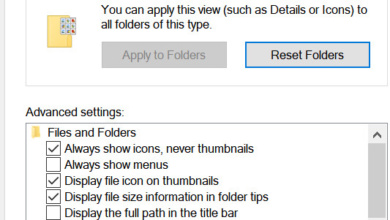How to Prevent Users from Changing Sounds in Windows?
The Sounds tab in the Sound Control Panel is used to change the sound theme for the system. It can also be used to change or disable the Windows notification sound. It contains all the system and events sounds that the user can test and change for their system. An administrator can disable this tab from a standard user in an organization or at home. It also has an option for enabling and disabling the Windows startup sound. In this article, we are showing you methods through which you can easily disable the Sounds Tab from Sound Control Panel.
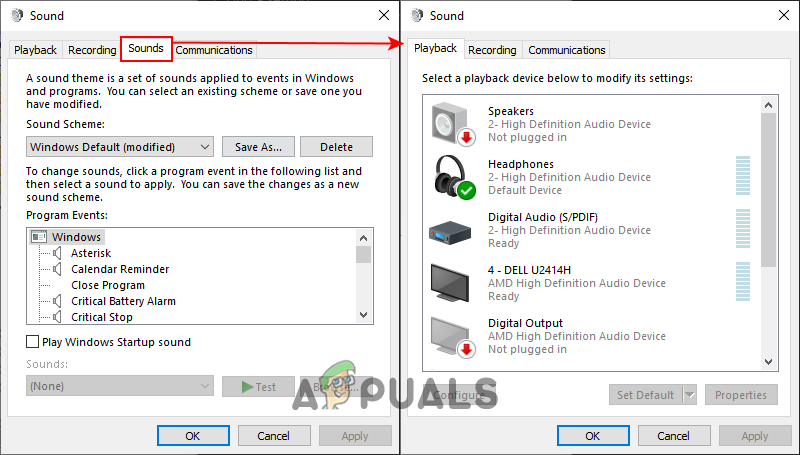
The settings can be found in the Group Policy Editor for disabling the Sounds Tab. However, some users will be using the Windows Home operating system that doesn’t come with the Group Policy Editor. That is why we are also providing the Registry Editor method for the same configuration.
Method 1: Using the Local Group Policy Editor
The Group Policy Editor can be used to prevent users from some of the Windows Settings. There is a specific policy setting that can remove the Sound Tab from the Sound Control Panel. There are two different categories in the Group Policy Editor; Computer Configuration and User Configuration. The setting that we are trying to configure can be found under the User Configuration only. Follow the below steps to remove the Sounds tab:
Note: Skip this method if you are using the Windows Home operating system on your computer. Try using the Registry Editor method.
- Press the Windows and R keys on your keyboard to open a Run dialog box. Then, you need to type “gpedit.msc” in the box and press the Enter key to open the Local Group Policy Editor.
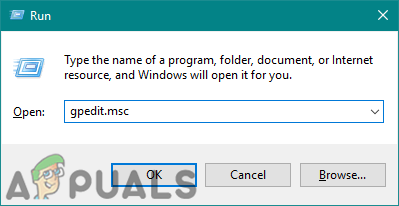
Opening the Group Policy Editor - Go to the following path in the Local Group Policy Editor window:
User Configuration\Administrative Templates\Control Panel\Personalization\
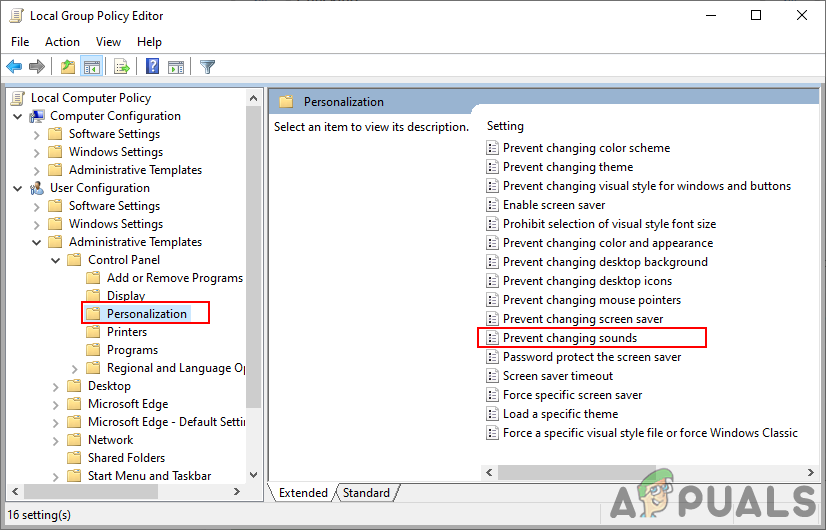
Navigating to the setting - Double-click on the setting named “Prevent changing sounds” or you can right-click on it and choose the Edit option. Now change the toggle option to Enabled and click on the Apply/Ok button to save the changes.
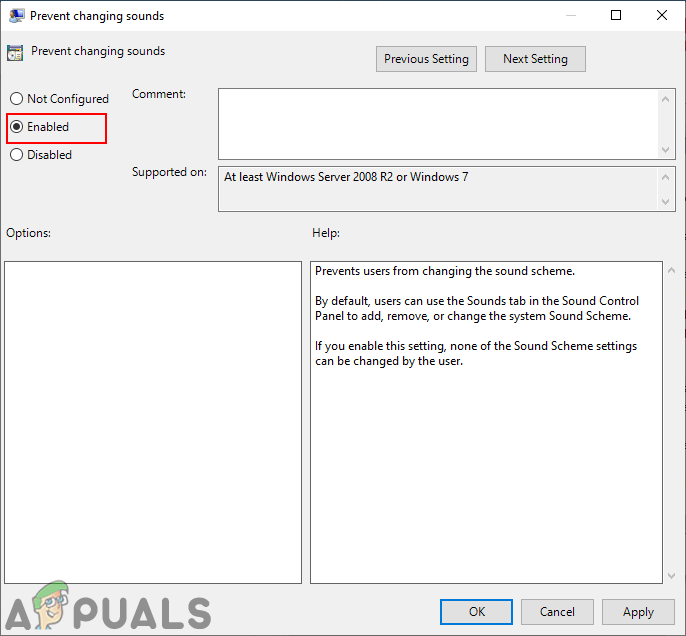
Enabling the setting - The changes in most policy settings automatically update. However, if it doesn’t update automatically, then you need to force update the group policy.
- Search for the Command Prompt in the Windows search feature, right-click on it and choose the Run as administrator option. Now type the following command in the elevated command prompt and press the Enter key:
gpupdate /force
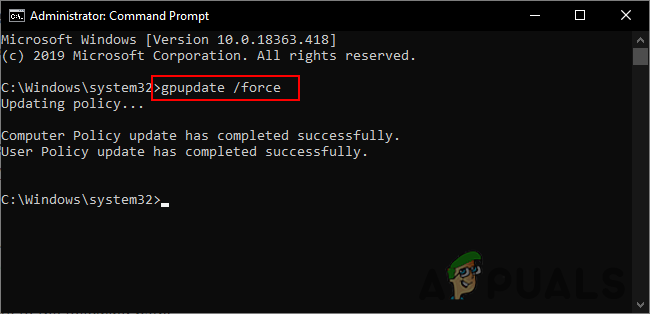
Force updating the group policy - You can always enable Sounds Tab back by changing the toggle option to Not Configured or Disabled in step 3.
Method 2: Using the Registry Editor
Another method for removing the Sounds tab is by using the Windows Registry. The information and settings related to applications and operating systems are all stored in the Windows Registry. If you already used the Local Group Policy Editor, then the Registry Editor will be automatically updated for that specific setting. However, if you are a Windows Home user and using this method directly, then you need to create some missing keys and values for this setting. The value must be created under the Current User hive. Follow the below steps to remove the Sounds tab:
Note: You can skip step 2 if you don’t want to create any Registry backup.
- Press the Windows and R keys on your keyboard to open a Run dialog box. Now type “regedit” in the box and press the Enter key to open the Windows Registry Editor. If you receive a UAC (User Account Control) prompt, then click on the Yes button.
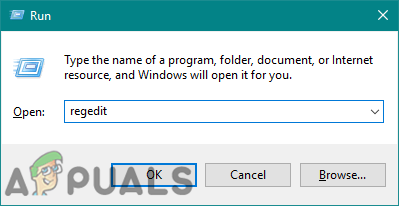
Opening the Registry Editor - You can also create a backup before making any new changes in the Registry. Click on the File menu in the menu bar and choose the Export option from the list. Choose the name and location, then click on the Save button.
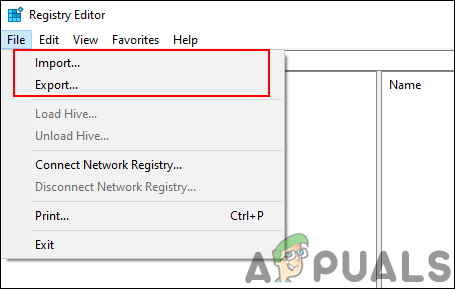
Creating a Registry backup Note: Click on the File menu and choose the Import option to restore the Registry backup.
- Now navigate to the following path in the Registry Editor window:
HKEY_CURRENT_USER\Software\Policies\Microsoft\Windows\Personalization
Note: If the Personalization key is missing, you can create it by right-clicking on the Windows key and choosing the New > Key option. Then naming the key as “Personalization“.
- Right-click on the right pane of the Personalization key and choose the New > DWORD (32-bit) Value option. Now name this key as “NoChangingSoundScheme” and save it.
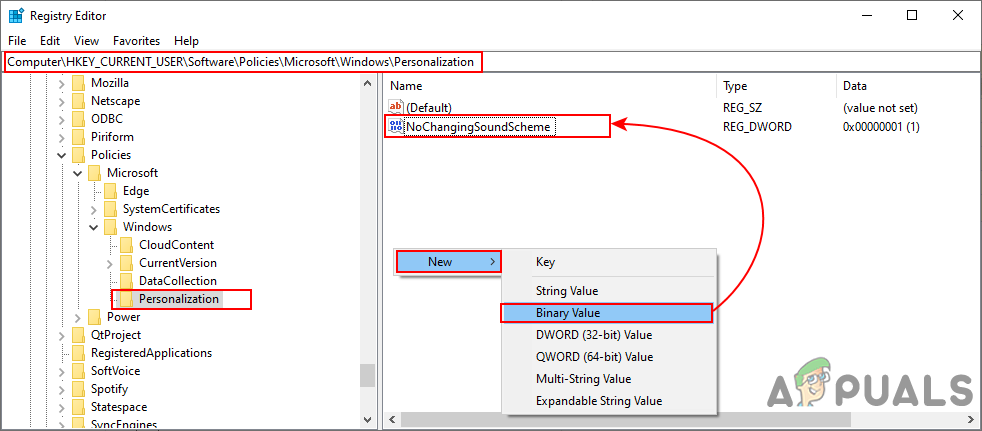
Creating a new value - Double-click on the NoChangingSoundScheme value or right-click on it and choose the Modify option. Now change the value data to 1 to disable the Sounds tab.
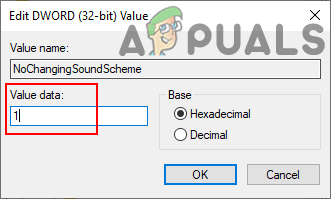
Changing the value data - Close the Registry Editor and restart your system to apply these changes.
- You can always enable the Sounds tab again by changing the value data to 0. You can also simply delete the value to enable it back.


